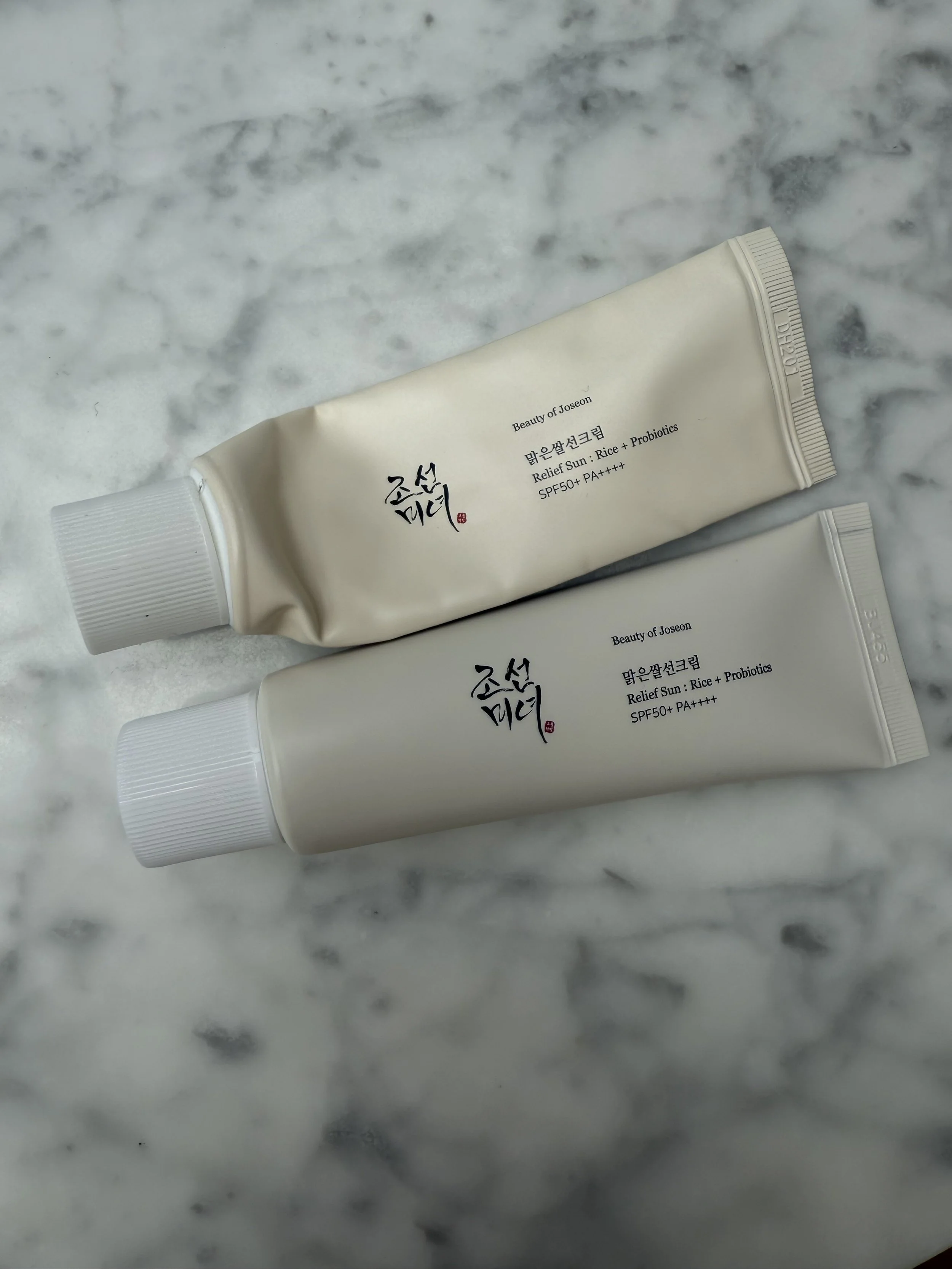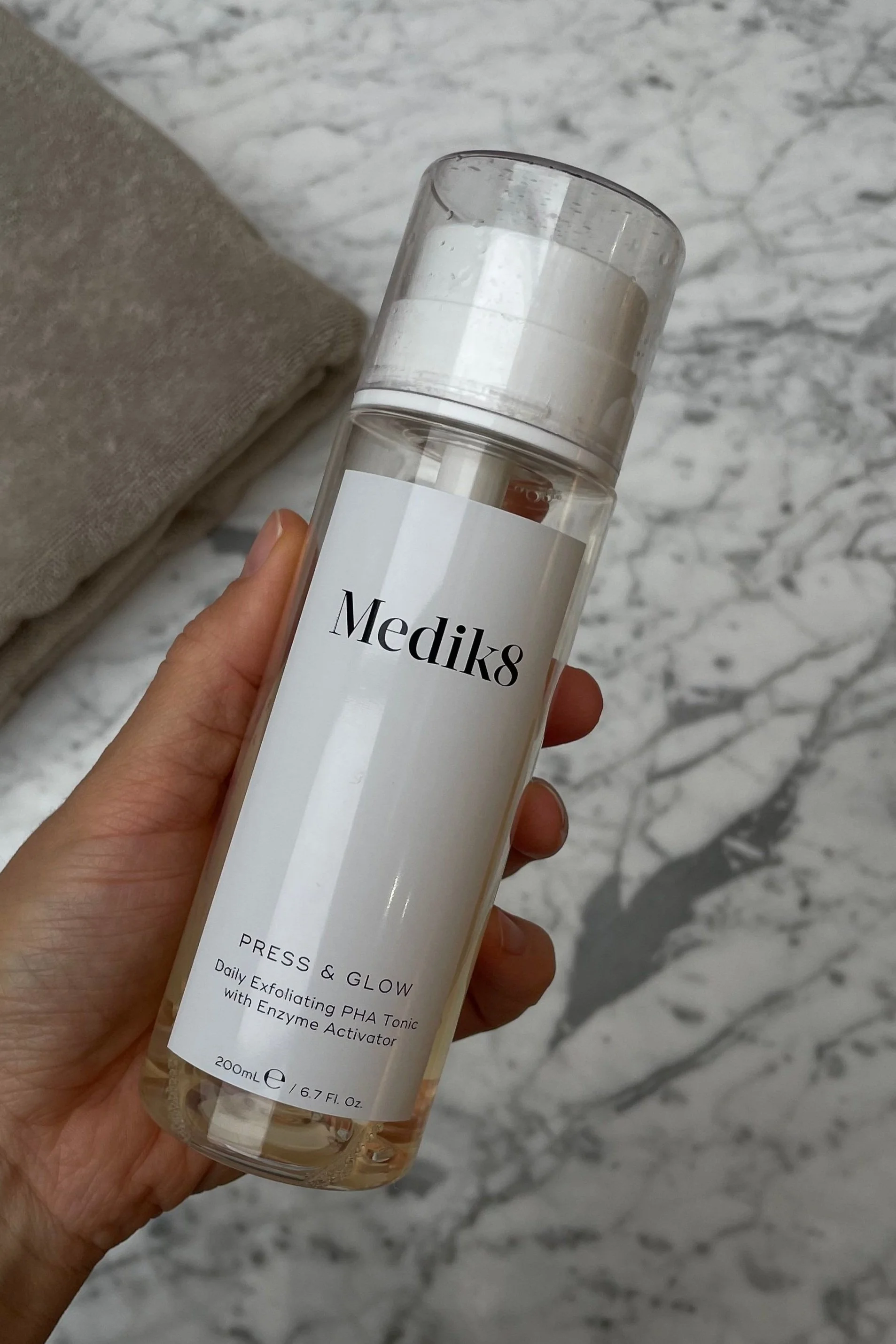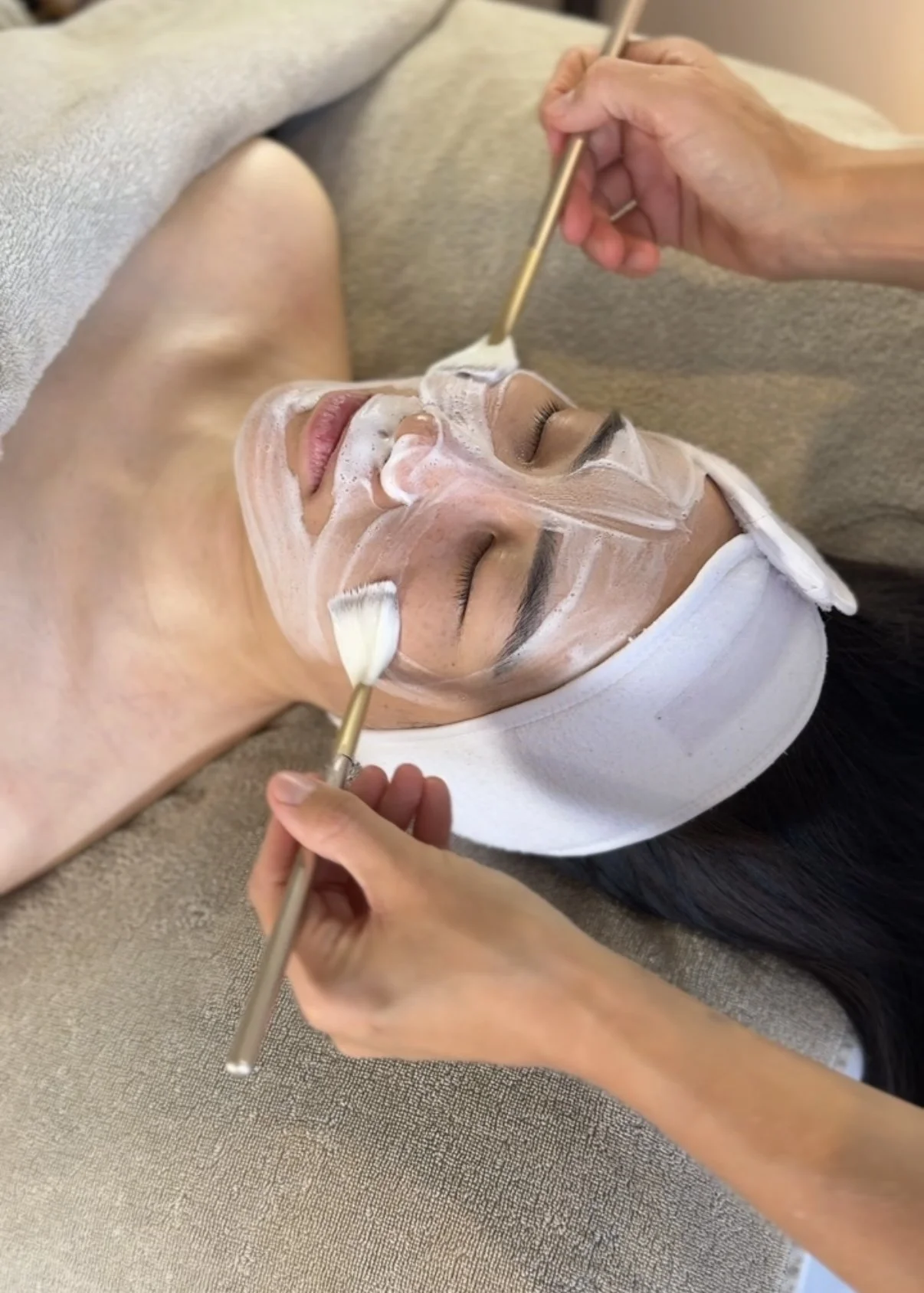Graceful #003 - Simple Skincare Routines That Support Ageing
Last week we talked about how we age, and it got a little technical, but I believe knowledge is power—and it should serve as a foundation to support how you make decisions around treatments, products, and the lifestyle habits you integrate into your life to support how we age over time.
I had some feedback after last week’s newsletter: ‘Can you include some guidance specifically about skincare in your next email?’
Absolutely. The magic mirror that reflects how we’re ageing on the inside? Let’s go:
I like to use the skin as a point of entry for lifestyle changes because of how it reflects both external and internal health. The most powerful approach is to tackle ageing from both internal and external fronts; because eating the right foods won’t take away dark spots, and applying a cream won’t support underlying issues like gut health or hormones. A truly integrative approach is the most effective way to support healthy, youthful-looking skin.
There are 7 main signs of premature ageing we look at in clinic:
Fine lines and wrinkles (think crow’s feet, 11s between the brows)
Dullness
Uneven tone
Dryness
Discoloration
Rough texture
Visible pores
The major causes of premature skin ageing that result in these signs were detailed in the last newsletter (like collagen degradation, free-radical damage, and inflammation), but essentially, we need to address each of these to improve our skin’s appearance from the inside out. More on that to come.
Externally, of course is our skincare routine at home (about 70% of the work), married with in clinic treatments (about 30% of the results we see).
Let’s start with some quick wins on the skincare front:
I like to build out routines based on someone’s appetite for evening admin, how much time they have, and of course, their budget. So I’ll list out a few frameworks below that are a good starting point depending on where you sit on the spectrum when we’re targeting ageing through skincare.
Here are three:
Firstly – the ‘Core Four’
If you’ve been around a while or had a consultation with me, you’ll know I talk about the Core Four a lot. These are the products I refer to as the foundation of any skincare routine — something to build on later with more targeted products, depending on your skin goals.
I often start here with teenagers, men looking to build a basic routine, or when I’m stripping back routines that are overcomplicating or aggravating the skin. We want to nail these products first before layering in more.
A routine might look like:
Morning:
Cleanse
Moisturise
SPF
Evening:
Cleanse (ideally double)
Exfoliant (2x per week)
Moisturiser
A Few Recommendations:
SPF
An excellent and really well priced SPF for those looking for a lightweight (doesn’t feel like sunscreen/fast absorbing) option with no white cast. A Korean cult for a reason
EXFOLIANT
A very gentle chemical exfoliant, I recommend to anyone with sensitive skin or already incorporating other actives in their routine.
CLEANSER
Go-to oil cleanser to take the day off in the evening. I use this in clinic too - works for most skin types, and nice slip to incorporate some facial massage.
EXFOLIANT
A gentle physical, and chemical exfoliant option in one product. Great to have on hand if you’re prone to flakiness, or prefer the feel of a gentle scrub. Comes in mini size to try out.
Next up: for the time-poor, but proactive – my ‘Two-Minute Win’ Routine
For those who want to slow the ageing process and support overall skin health, but don’t have much time.
(As always, there’s nuance—this won't suit everyone.)
DAILY – Morning Routine:
Cleanse
Find a cleanser appropriate for your skin type. Oily skin – look for a gel or foaming cleanser. Drier skin – look for a cream-based cleanser. Nailing your cleanser can make a huge difference in how your skin feels and retains moisture—we don’t want to strip it.
Antioxidant Serum
Antioxidants fight free radicals, which can damage and age your skin. The most popular and easy-to-find topical antioxidant is vitamin C. There are lots out there—look for one packaged in a bottle that doesn’t allow light in (dark bottles), as sunlight can oxidise vitamin C, rendering it ineffective once it hits your skin. I like Medik8.
Moisturising SPF
Little else will protect your skin from UV rays (which are responsible for up to 90% of skin ageing). Apply a broad-spectrum sunscreen with an SPF of at least 30, every morning. This blocks 97% of the sun's rays—preventing premature ageing and helping protect against skin cancers. Make sure you apply enough - about a quarter teaspoon of sunscreen for your face, or a line of sunscreen the length of two fingers. I’m choosing to combine hydration with protection here, but if you’re dehydrated of course, feel free add in a moisturiser before this.
DAILY – Evening Routine:
Cleanse (double cleanse ideally)
I can’t emphasise this step enough. You need to remove the day’s dirt, grime, pollution, SPF, makeup, and oil (sebum). If we leave these on our skin overnight, you’ll likely see clogged pores and skin damage over time. Your skin needs to breathe and rejuvenate while you sleep, and it can’t do that if it's congested.
I like to start with an oil or balm cleanser to remove the day, then follow with a second cleanse using your morning cleanser—gel, foam, or cream. This second cleanse allows your skin to breathe and enhances product penetration.
Treat with Retinoid
The most scientifically studied, clinically proven anti-ageing skincare ingredient is the retinoid family—Vitamin A. These come in different forms: prescription strength (like tretinoin), or over-the-counter (retinol, retinal, etc.). All target similar pathways to tighten the skin, improve fine lines, and even reverse pre-skin cancers.
Using this consistently is more important than the strength you use (to a certain extent). You’ll see results over time. Start slowly with a low dose, increasing only as your skin permits—there’s a risk of sensitivity if you come in too aggressively. Skin Rocks & Medik8 are both great, and stagger strengths.
Moisturise
Many people apply this at night, and I would argue it’s non-negotiable for most—especially considering how many clients I see with dehydrated skin and impaired barriers. Pick a moisturiser that suits your skin type, doesn’t clog pores, and ideally includes ingredients like ceramides, peptides, or growth factors.
1–3 TIMES PER WEEK:
Exfoliate
When we’re younger, our skin cells turn over every 6–8 weeks. As we age, this process slows—to 10, 12, or even 14 weeks. This means rough texture, dullness, and fine lines become more apparent. Exfoliating can help speed this process up by removing dead skin cells and triggering renewal.
You’ll see smoother, more radiant skin with regular exfoliation, but it can be overdone—leading to inflammation. Most people can exfoliate twice a week, but for sensitive skin, start with once. You can exfoliate mechanically (physical scrubs) or chemically like an AHA.
Use with caution: if your skin feels inflamed, pull back for a few weeks.
SOMETHING TO REMEMBER:
This is the routine and ingredient line-up you’ll hear about online most often — for good reason — but it’s often over-complicated by layering too many extra ingredients in a routine that hasn’t been supported by professional guidance.
For the skincare enthusiast – my ‘Rejuvenation’ Routine
If you’re ready to take your routine up a notch and really maximise results, you can add in a few more targeted products. This takes more time and investment, but can yield impressive outcomes; provided you’re not managing other conditions too, like rosacea, acne or an impaired barrier.
That said, I gently remind clients: if you’re not also supporting your skin from within—with nutrition, stress management, sleep, and in-clinic treatments—results will be limited. Your skin will only reflect the effort you're putting in across all areas.
DAILY – Morning Routine:
Cleanse
Toner or mist (to support hydration and your barrier)
Antioxidant serum (look for a combination of Vitamins C & E)
Hydrating eye cream / or one with an antioxidant formula (I like either option to include peptides and ceramides)
Moisturiser (optional if your SPF is very hydrating)
SPF 50+ ideally
DAILY – Evening Routine:
Cleanse (ideally double cleanse with an oil or balm to remove the day, then your usual cleanser)
Toner or mist
Treat with retinoids, growth factors, and/or peptides
(If you want to do the most for your skin, these work via different pathways to target ageing. If pregnant or breastfeeding, try bakuchiol.)Eye cream (ideally formulated with a low dose of vitamin A to help thicken skin, which can become thinner and more crepey with age)
Moisturise (you could opt for a brightening night cream if you have dark spots—look for niacinamide, kojic acid, or liquorice extract)
1–3 TIMES PER WEEK:
Exfoliate after cleansing in the evening. Once a week for sensitive skin; 2–3 times per week for non-sensitive skin.
RESULTS
By following routines consistently, many of my clients see great results at home—supporting skin health and reversing early signs of ageing—before, or alongside in-clinic treatments.
This is a before and after: 6 months into at home routine guidance, and in-clinic treatments; always incorporating LED and lymphatic drainage.
There is so much we can do at home to support what we see in the mirror. But it would be remiss of me not to say again: there’s a limit to what can be done topically. These are surface-level practices.
Sleep, nutrition, stress, hydration, and hormonal balance all play their part, and can be enhanced by various treatments in the clinic too, but you’ll ultimately yield the most results by making sure your full at-home routine is doing the most.
Determine what works for you and your lifestyle—and do it consistently. I’m confident you’ll see a difference. If you need any help I’m here to support!
From My Desk This Week:
One product I’m loving: I’ve been using the Medik8 Advanced Peptides for a few months and I’m a total convert. It contains, peptides, growth factors and hydrating ingredients + I can layer it around my Vitamin A (as suggested in the Rejuvenate routine ^). Skin is feeling extra plump!
What I’m reading/listening to: Reading Survival of the Prettiest: The Science of Beauty, written by a practicing psychologist; about what we find beautiful and why, and how it’s not a cultural construct, it’s in our biology and present across every different culture throughout history. Fascinating!
In the media: Skims by the one and only Kim Kardashian released a face bra !?- I’m not a fan unless you’ve recently undergone surgery, and many others aren’t either. Read more about why here.
Small shift to try this week: I’ve been making a chia seed flaxseed, and psyllium husk mixture to keep in the fridge. Soak in your choice of milk overnight, and have a few scoops every morning to support healthy digestion it’s also great way to support hormone balance, both of which shows up in your skin.
Please feel free to comment with any questions, feedback or suggestions for future issues and I’ll get back to you next week! Please forward this on, to anyone you think might find them helpful. You can sign up here, and read past issues here.
Thank you for being here—it’s been such a fun and refreshing change to share in this way, I hope you’re enjoying it too.
With grace,
Charlie x
*For any studies or references to support this newsletter please reach out.






